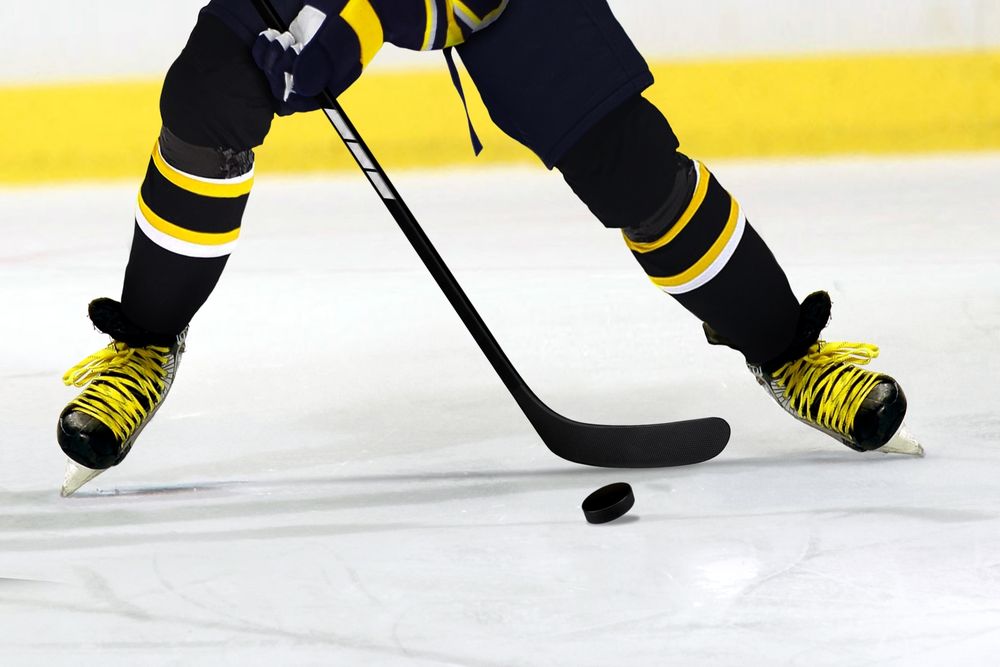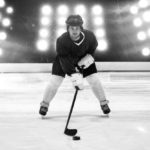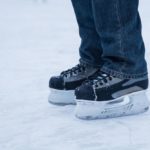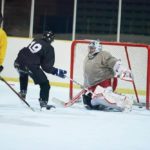Playing hockey with glasses can present unique challenges, from fogging up to obstructing visibility. While contacts or laser eye surgery are preferred options, wearing glasses can still be feasible with proper precautions. This article aims to provide valuable insights and recommendations for effectively playing hockey while wearing glasses.
It will discuss selecting the right frames, choosing a suitable helmet, and finding the appropriate face protection to prevent injuries and fogging. Additionally, it will explore the historical context of glasses in the NHL and the prevalence of contacts among professional players.
Challenges of Playing Hockey With Glasses
Playing hockey with glasses poses several challenges. One major challenge is the issue of fogging up on the ice. The condensation that occurs when wearing glasses can obstruct vision and make it difficult to see the puck and other players. Glasses may also impede visibility and increase the risk of losing them during gameplay.
While it is possible to play with prescription goggles, there are advantages to wearing contacts in hockey. Wearing contacts allows for better peripheral vision and reduces the risk of glasses getting damaged. Contacts also offer advantages such as improved depth perception, which can enhance gameplay.
Tips for Playing Hockey With Glasses
While playing hockey with glasses presents challenges, there are several tips that can help improve the experience and ensure optimal vision on the ice.
To improve visibility, it is important to choose the right frames that fit comfortably under a helmet. Opt for glasses with thin metal frames that won’t interfere with the helmet and cause discomfort.
Additionally, selecting the right helmet is crucial for both protection and comfort. Test different helmet styles to find the most suitable fit with glasses, ensuring that it fits snugly against the head.
Face protection is also essential in preventing injuries and protecting glasses. Consider using a visor or full-face metal cage to prevent fogging and enhance visibility.
Selecting the Right Frames for Hockey
When selecting frames for hockey, it is crucial to prioritize comfort and fit. The right frames can enhance your performance on the ice and prevent glasses from fogging up. Opt for glasses with thin metal frames that fit comfortably under a helmet. Bulky frames can make wearing a helmet challenging and cause discomfort.
It is essential to choose strong but lightweight frames for playing hockey. Consider the size and shape of the frames to ensure a proper fit and avoid oversized frames that could interfere with the helmet.
Choosing the Appropriate Helmet for Glasses
To ensure a secure and comfortable fit for glasses, it is crucial to select the appropriate helmet for playing hockey. Choosing the right helmet for glasses is essential for ensuring comfort and safety on the ice.
Here are three key considerations when selecting a helmet for glasses:
- Frame Compatibility: Look for a helmet that provides enough space to accommodate your glasses comfortably. Consider helmets with adjustable padding or removable padding to create a customized fit for your glasses.
- Strap Adjustability: Opt for a helmet with adjustable straps to ensure a snug and secure fit with your glasses. Adjustable straps allow you to find the perfect balance between comfort and stability.
- Ventilation: Look for a helmet with adequate ventilation to prevent fogging and ensure clear visibility. Proper ventilation will help reduce moisture buildup, keeping your glasses clear and your vision unobstructed.
Finding the Right Face Protection for Hockey
The appropriate face protection for hockey plays a crucial role in ensuring the safety and protection of both the player and their glasses.
When it comes to face protection options, there are a few choices to consider.
One option is a visor, which provides some protection without obstructing vision. This is especially recommended for beginners.
Another option is a full plastic face shield, which offers more coverage but may be prone to fogging.
For the best combination of protection and maintaining visibility, a full-face metal cage is the ideal choice. It provides comprehensive coverage while minimizing the risk of fogging.
Ultimately, the decision on face protection should prioritize both the safety of the player and the need to maintain clear vision on the ice.
Glasses and the NHL
NHL players have transitioned away from wearing glasses while playing hockey, opting for contact lenses or other vision correction methods. This shift can be attributed to the advantages that contacts offer in terms of enhanced vision and performance on the ice.
Here are three reasons why NHL players prefer vision correction methods other than glasses:
- Improved peripheral vision: Contacts provide a wider field of vision compared to glasses, allowing players to have better awareness of their surroundings during gameplay.
- Reduced risk of damage: Glasses are more prone to breaking or getting dislodged during physical contact in hockey. Contacts eliminate this risk, ensuring uninterrupted vision throughout the game.
- Enhanced comfort and flexibility: Glasses can be uncomfortable to wear under a helmet, whereas contacts offer a more comfortable and flexible solution. They do not impede movement or cause discomfort during intense physical activity.
Wearing Glasses Under a Hockey Helmet
Wearing glasses under a hockey helmet presents challenges but is possible with the right frames and helmet fit. It is important to choose glasses with thin frames, preferably made of metal, to ensure a better fit. Testing different helmets with glasses is necessary to find a comfortable and secure fit. Adjusting the helmet straps properly can also help accommodate glasses.
When wearing glasses under a hockey helmet, it is recommended to use face protection, such as a visor or a full-face metal cage, to prevent fogging and protect the glasses. Taking precautions, such as using defogging wipes or dish soap on the lenses, can help reduce fogging.
While wearing glasses under a hockey helmet may pose some challenges, with the right frames, fit, and precautions, it is possible to play hockey comfortably and safely.
Preventing Fogging of Glasses During Play
To minimize fogging of glasses during play, there are effective measures that can be taken. Fogged glasses can significantly impact gameplay, leading to reduced visibility and potential accidents on the ice.
Here are three fogging prevention techniques that can help hockey players maintain clear vision:
- Anti-fog sprays: Applying an anti-fog spray on the lenses before playing can create a protective barrier that prevents condensation and fogging.
- Breathable face coverings: Using a face mask or balaclava made from breathable materials can help redirect the warm breath away from the glasses, reducing the chances of fogging.
- Proper ventilation: Ensuring proper ventilation in the helmet by choosing a model with adequate vents can help regulate temperature and minimize fogging.
Benefits of Playing Hockey With Contacts
Playing hockey with contacts provides numerous benefits for players, enhancing their vision and overall performance on the ice. Unlike glasses, contacts eliminate the risk of fogging up and obstructing visibility during gameplay. Contacts also offer better peripheral vision, allowing players to have a wider field of view and react more quickly to their surroundings.
Additionally, wearing contacts reduces the risk of glasses getting damaged or breaking during intense physical contact on the ice. Contacts provide a more secure and comfortable option for vision correction while playing hockey. Many NHL players opt for contacts as they offer improved depth perception and peripheral vision, enhancing their performance on the ice.
Contacts are a popular choice among professional athletes in various sports, including the NHL, NBA, NFL, and MLB, due to their ability to improve overall vision and gameplay.
Contacts and Professional NHL Players
Contacts are a preferred vision correction option among professional NHL players. They offer numerous advantages for athletes in sports, including hockey. Here are three reasons why contacts are popular among NHL players:
- Enhanced Performance: Contacts provide optimal vision correction, allowing players to see clearly on the ice. Good eyesight is crucial for tracking the puck, anticipating plays, and making split-second decisions. Contacts offer improved depth perception and peripheral vision, giving players a competitive edge.
- Safety and Convenience: Wearing glasses during a fast-paced and physical game like hockey can be risky. Glasses can break or fog up, hindering visibility and increasing the risk of injury. Contacts eliminate these concerns, providing a safe and convenient option for vision correction during gameplay.
- Compatibility with Protective Gear: Contacts are compatible with helmets, visors, and face cages commonly worn in hockey. They do not interfere with the fit or comfort of these protective gear, allowing players to focus on their performance without distractions.
NHL Players Who Wear Glasses (With Contacts)
Several NHL players wear glasses in their everyday lives, but they rely on contact lenses for vision correction during games. These players understand the importance of good vision on the ice and opt for contact lenses as their preferred method of vision correction.
By wearing contacts, NHL players can enjoy improved peripheral vision and reduce the risk of glasses getting damaged during intense gameplay. Some examples of NHL players who wear glasses include Shea Weber, Marc-Andre Fleury, and Zach Parise.
However, it is worth noting that some players who previously wore glasses have undergone laser eye surgery to permanently correct their vision.
Ultimately, wearing contact lenses or undergoing laser eye surgery can significantly enhance a player’s vision and performance on the ice.
Frequently Asked Questions
Are There Any Specific Challenges That Come With Wearing Glasses While Playing Hockey?
Challenges of wearing glasses while playing hockey include fogging up, visibility impairments, and the risk of losing or damaging them. However, with proper precautions, such as choosing the right frames, helmet, and face protection, these challenges can be mitigated.
What Are Some Tips for Playing Hockey With Glasses?
To play hockey with glasses, ensure a sturdy pair that fits comfortably under a helmet. Consider thin metal frames, a well-fitting helmet, and appropriate face protection. Prevent fogging with dish soap or defogging wipes.
How Do You Choose the Right Frames for Hockey?
When choosing eyewear for hockey, it is important to prioritize protective eyewear that fits comfortably under a helmet. Consider thin metal frames that don’t interfere with the helmet and provide optimal visibility.
What Factors Should Be Considered When Selecting a Helmet for Glasses?
When selecting a helmet for glasses, it is important to consider helmet fit and lens compatibility. A properly fitting helmet ensures comfort and safety, while lens compatibility ensures that the glasses can be worn securely without hindering visibility.
Is There a Way to Prevent Glasses From Fogging up While Playing Hockey?
Preventing fogging: To keep glasses clear while playing hockey, try applying dish soap to lenses or using defogging wipes. Consider wearing a full-face metal cage for optimal visibility. Eye safety: Protective eyewear is crucial for hockey players with glasses to reduce the risk of injuries.
Conclusion
In conclusion, playing hockey with glasses may present challenges, but with the right precautions and equipment, it is still feasible.
Selecting the appropriate frames, choosing a suitable helmet, and opting for the right face protection are key factors in ensuring safety and visibility on the ice.
While contacts and laser eye surgery are preferred options, many professional NHL players have successfully played with glasses.
So, don’t let wearing glasses deter you from pursuing your hockey dreams.









